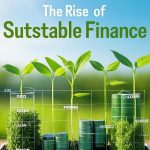The global automotive industry is undergoing its most radical transformation since the invention of the combustion engine. With electric vehicles (EVs) projected to account for 40% of car sales by 2030 (IEA), this shift impacts everything from urban planning to rare earth mining. Let’s explore the technologies and controversies driving this revolution.
1. Battery Breakthroughs and Limitations
Current advancements powering the EV surge:
- Solid-state batteries: Toyota’s 2024 prototype claims 750-mile range with 10-minute charging
- Sodium-ion alternatives: CATL’s cost-effective solution for emerging markets (50/kWhvs.lithium’s130/kWh)
- Recycling hurdles: Only 5% of EV batteries are currently recycled (MIT, 2023)
Multimedia suggestion: Infographic comparing battery chemistries
2. Charging Infrastructure Wars
The $190B global race to build charging networks:
- Tesla’s NACS becoming industry standard (Ford, GM, Volvo adoptions)
- Europe’s “EV highways” with solar-powered inductive roads (Sweden’s eRoadArlanda)
- Emerging markets innovating: India’s battery-swap stations for rickshaws (30-second swaps)
3. Geopolitical Battles in the Supply Chain
Critical mineral dependencies creating new power dynamics:
- 70% of cobalt mined in DRC under ethical scrutiny
- U.S. Inflation Reduction Act’s local sourcing requirements
- China’s dominance in graphite processing (90% global share)
4. The ICE Comeback Debate
Counter-trends challenging full electrification:
- Synthetic e-fuels keeping classics road-legal (Porsche’s $75M Haru Oni plant)
- Hydrogen combustion engines (Toyota Corolla Cross H2 concept)
- Biofuel mandates in aviation affecting automotive R&D budgets
5. Second-Life EV Ecosystems
Innovative reuse strategies addressing sustainability concerns:
- Nissan Leaf batteries powering Tokyo apartment complexes
- GM’s collaboration with PG&E for grid stabilization
- Startup partnerships converting retired EVs into off-grid power stations
Conclusion: As EV adoption accelerates, the industry must balance technological ambition with ethical sourcing and infrastructure realities to avoid stalling progress.

















